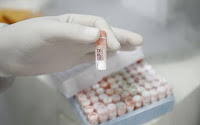By Jody Lewis, HIV Edmonton's Volunteer & Communications Coordinator
There have been many nameless heroes who championed in the field of HIV right here in Alberta. It is with great sadness the people of Alberta will never get to hear their names, see their picture or know their stories and their causes. Most people with HIV work quietly in the background, giving up their lives while passionately and determined to make right the many wrongs projected on them and to others living with this disease.
Some of our HIV positive heroes have done medical drug trials which eventually destroyed their bodies and minds, with hopes that their sacrifice will save countless lives. Some HIV positive heroes stand up in front of thousands of Albertans every year educating those of the perils of HIV, then quietly blend back in to the community. Some have fought for access to life saving medications, which thousands of Albertans now benefit from. Others fought to change government policies in healthcare, and social policy which benefit every Albertan citizen to this day. Many HIV positive heroes stand up for human rights and access to medical treatments such as microbicides, so women worldwide can have more control over their bodies especially in countries where they have no rights. Yet these heroes remain hidden because of HIV stigma.
If you try looking for the faces of those infected with HIV, you will be hard pressed to find just a handful of HIV positive Albertans that are able to step forward, and to speak confidently and proudly of their HIV positive status. All too often the only names and pictures Albertans see are that of the rogue HIV positive person who has allegedly tried to spread the disease maliciously to the seemingly innocent citizens. A lot of these criminalized HIV positive individuals are unable to, in some manner, disclose their status for many reasons, such as; they have not received appropriate HIV post test counselling or that individual may have a neurocognitive and psychiatric situation. However, this negative portrait of HIV continues to keep the HIV positive heroes of Alberta hidden, forgotten and unrecognized.
Many of these people deserve recognition, they deserve to be nominated for distinction awards, honours and medals; Most of Alberta’s HIV positive heroes truly deserve the Order of Canada in many ways. The HIV positive hero proudly live life without these acknowledged achievements, knowing that the work they do may save even just one life. Yet, even in their deaths they are still unable to be honoured with the true dignity and respect deserved of their life’s achievements. Many of the hero’s families continue to be ashamed of that HIV positive status their sons and daughters had carried in life.
HIV Edmonton currently houses five “Memorial Quilts,” on which there are hundreds of names stitched on them. Their heroic deeds are now lost to the threads that hold their stars, so HIV Edmonton would like to invite the public to come and reflect on these marvellous quilts during our regular business hours. If you recognize an HIV positive heroes star, we would like to know and share the stories these threads hold.
“To be a star, you must shine your own light, follow your own path, and don't worry about the darkness, for that is when the stars shine brightest.” African Proverb
There have been many nameless heroes who championed in the field of HIV right here in Alberta. It is with great sadness the people of Alberta will never get to hear their names, see their picture or know their stories and their causes. Most people with HIV work quietly in the background, giving up their lives while passionately and determined to make right the many wrongs projected on them and to others living with this disease.
Some of our HIV positive heroes have done medical drug trials which eventually destroyed their bodies and minds, with hopes that their sacrifice will save countless lives. Some HIV positive heroes stand up in front of thousands of Albertans every year educating those of the perils of HIV, then quietly blend back in to the community. Some have fought for access to life saving medications, which thousands of Albertans now benefit from. Others fought to change government policies in healthcare, and social policy which benefit every Albertan citizen to this day. Many HIV positive heroes stand up for human rights and access to medical treatments such as microbicides, so women worldwide can have more control over their bodies especially in countries where they have no rights. Yet these heroes remain hidden because of HIV stigma.
If you try looking for the faces of those infected with HIV, you will be hard pressed to find just a handful of HIV positive Albertans that are able to step forward, and to speak confidently and proudly of their HIV positive status. All too often the only names and pictures Albertans see are that of the rogue HIV positive person who has allegedly tried to spread the disease maliciously to the seemingly innocent citizens. A lot of these criminalized HIV positive individuals are unable to, in some manner, disclose their status for many reasons, such as; they have not received appropriate HIV post test counselling or that individual may have a neurocognitive and psychiatric situation. However, this negative portrait of HIV continues to keep the HIV positive heroes of Alberta hidden, forgotten and unrecognized.
Many of these people deserve recognition, they deserve to be nominated for distinction awards, honours and medals; Most of Alberta’s HIV positive heroes truly deserve the Order of Canada in many ways. The HIV positive hero proudly live life without these acknowledged achievements, knowing that the work they do may save even just one life. Yet, even in their deaths they are still unable to be honoured with the true dignity and respect deserved of their life’s achievements. Many of the hero’s families continue to be ashamed of that HIV positive status their sons and daughters had carried in life.
HIV Edmonton currently houses five “Memorial Quilts,” on which there are hundreds of names stitched on them. Their heroic deeds are now lost to the threads that hold their stars, so HIV Edmonton would like to invite the public to come and reflect on these marvellous quilts during our regular business hours. If you recognize an HIV positive heroes star, we would like to know and share the stories these threads hold.
“To be a star, you must shine your own light, follow your own path, and don't worry about the darkness, for that is when the stars shine brightest.” African Proverb






